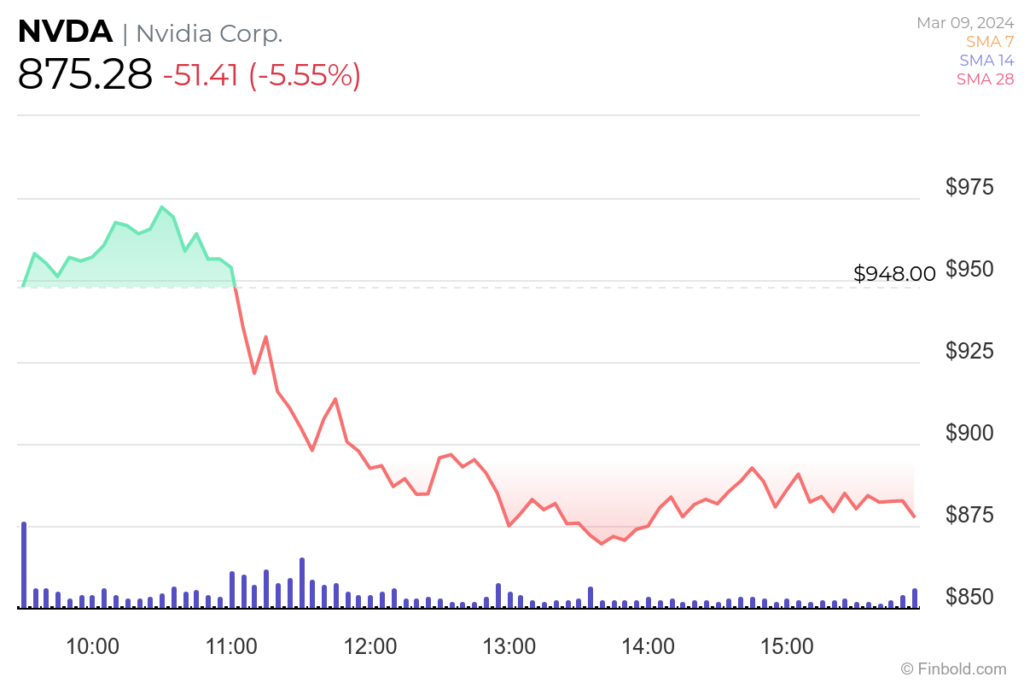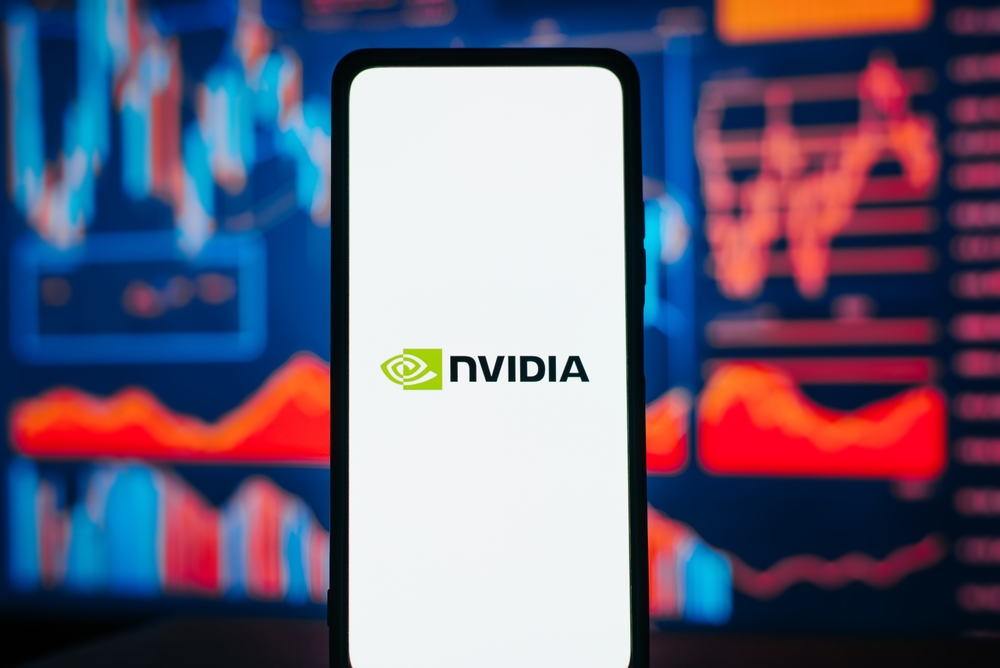Nvidia’s (NASDAQ: NVDA) stock, riding high on the wave of artificial intelligence (AI) demand and profitability, experienced a significant setback on Friday, March 8, signaling a potential end to its recent bullish streak.
Initially poised for continued sessions of gains targeting the $1,000 resistance, the stock took a sharp turn, ending the last day of the week down 5.5% after having surged as much as 5.1% earlier in the morning of March 8.
This drastic reversal marks the first time since June 2017 that the semiconductor stock saw a notable intraday surge followed by a substantial decline by the session’s close.
Additionally, Friday’s drop represents one of Nvidia’s largest single-day percentage declines since May 31, 2023, when it fell 5.7%. By press time, NVDA was trading at $875.28.

Can Nvidia sustain gains?
Despite Nvidia’s success in meeting the rising demand for AI chips and maintaining profitability, concerns about the sustainability of its growth trajectory have emerged. Doubts regarding the company’s ability to sustain its momentum have led to heightened market volatility, reflected in Friday’s sharp downturn.
Two of the company’s directors’ recent sales of Nvidia shares further underscore the uncertainty surrounding the stock’s future trajectory. According to Bloomberg, directors Tench Coxe and Mark Stevens sold shares worth approximately $170 million and $10 million recently, capitalizing on the stock’s surge into record territory.
Despite these challenges, analysts remain cautiously optimistic about Nvidia’s long-term prospects, citing the ongoing AI boom as a critical driver of future growth. Investment in the AI sector is expected to remain robust in the coming years as companies prioritize technological innovation and leverage AI capabilities to gain a competitive edge.
While the recent downturn in Nvidia’s stock may signal the end of its uninterrupted bullish run, it does not necessarily signify a fundamental shift in the company’s trajectory.
Stock market impacted by payroll data
The latest decline by Nvidia mirrored the overall market turbulence that emerged following the release of the February US Nonfarm Payrolls (NFP) data, which led to broader market jitters.
While February hiring surpassed expectations, concerns arose over a significant downward revision to January data and a rise in the Unemployment Rate to a two-year high of 3.9%.
In summary, it will be interesting to monitor how Nvidia reacts to the recent downturn, as it will potentially indicate the next NVDA trajectory.
Disclaimer: The content on this site should not be considered investment advice. Investing is speculative. When investing, your capital is at risk.








